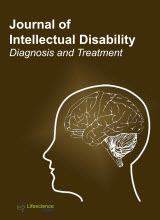jiddt
|
|
Abstract: Objective: The relevance of research is determined by the fact that it allows identifying the main criteria by which the development of a teacher is ensured both at the level of personal development and at the level of improving labour functions. The authors understand the complex development of personal and social-labour functions of a teacher as self-development in the process of fulfilling professional relations. Keywords: Teacher, professional self-development, scientific and methodological work, motivation, teacher qualities.
|
|
|
Abstract: Objective: The paper examined for the first time the features of the formation of systemic critical thinking of students of a higher educational institution, using systemic methods specially developed for this. Results: The peculiarity of what has been said is that students in the process of implementing this method learn and develop simultaneously the proposed types of activities (actions) and the corresponding ways of thinking, including critical ones, determined by them. The particularly important result of the implementation of a systematic approach and systematic methods developed on its basis is the formation of systematic-critical thinking. Conclusion: The concept of systematic-critical thinking has been developed. Using a systematic approach as a scientific method allowed to significantly transform not only theory and practice but also existing traditional technologies of the formation of critical thinking. Keywords: Educational process, methods of cognition, teaching methods, research methods, work with text.
|
|
|
Abstract: Objective: In the process of creativity, the child develops intellectually and emotionally, determines its attitude towards life and its place in life, acquires the experience of collective interaction, improves its skills in working with various tools and materials. Keywords: Creative thinking, preschool age, intellectual and emotional development of a child, humanisation of the pedagogical process, interpersonal interaction.
|
|
|
Abstract: Objective: The study aims to identify the possibility of using a set of methods that a future teacher can apply upon working with schoolchildren, and value-based attitudes, which subsequently develop the students' desire to learn. Keywords: Professional education, learning processes, association, structure, training, development.
|
|
|
Abstract: Objective: The level of research skills of children with inclusion depends on the teacher's research competencies. To develop them, a future teacher must constantly conduct research and practical work in his own learning process. Keywords: Cultural mechanism, design and research activities, research competence, reproductive and heuristic levels of students, creative problem-solving.
|


